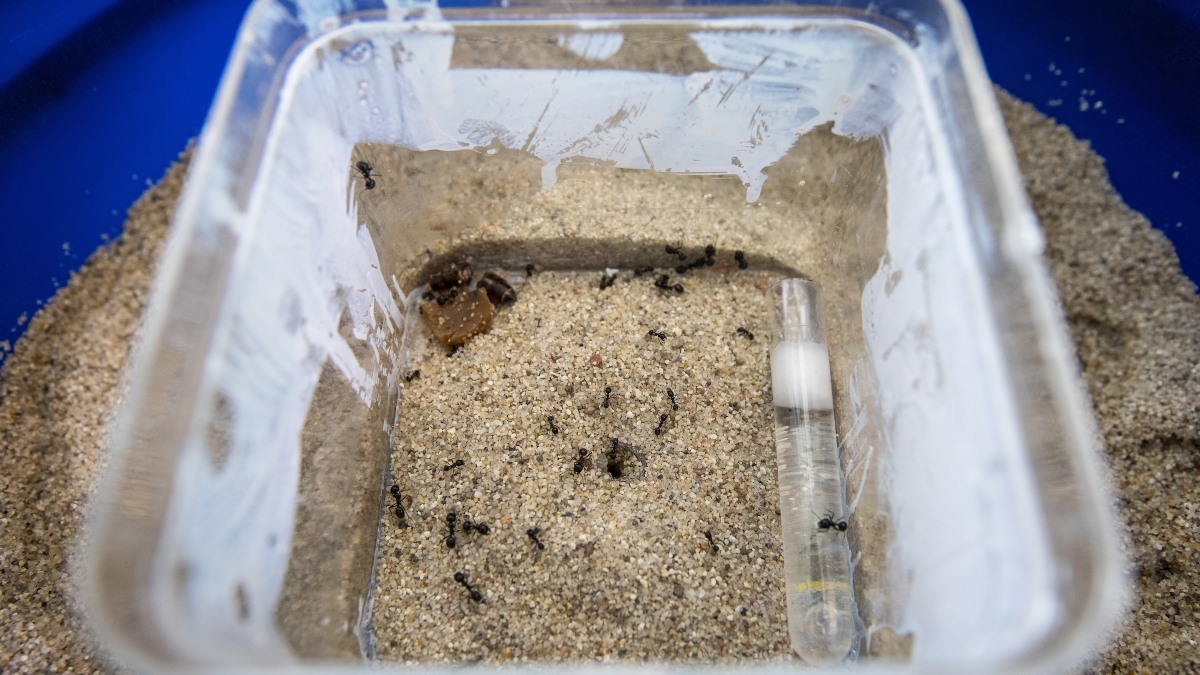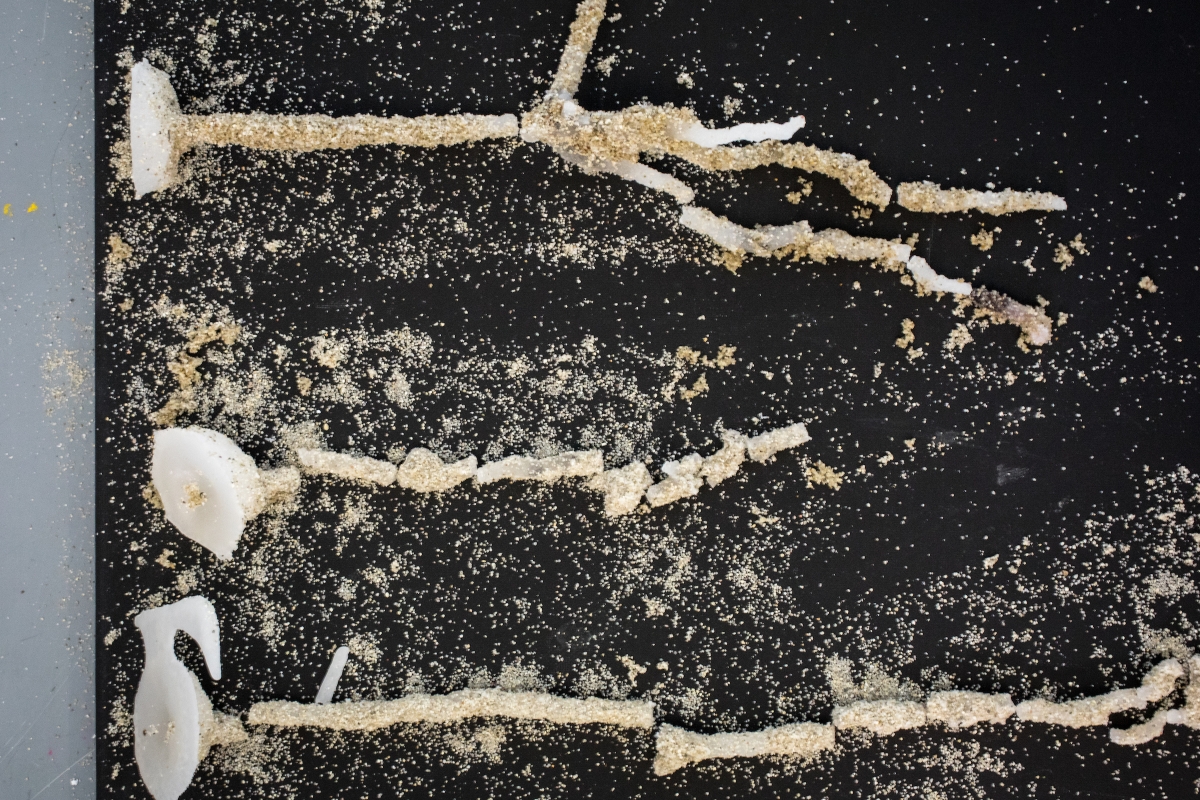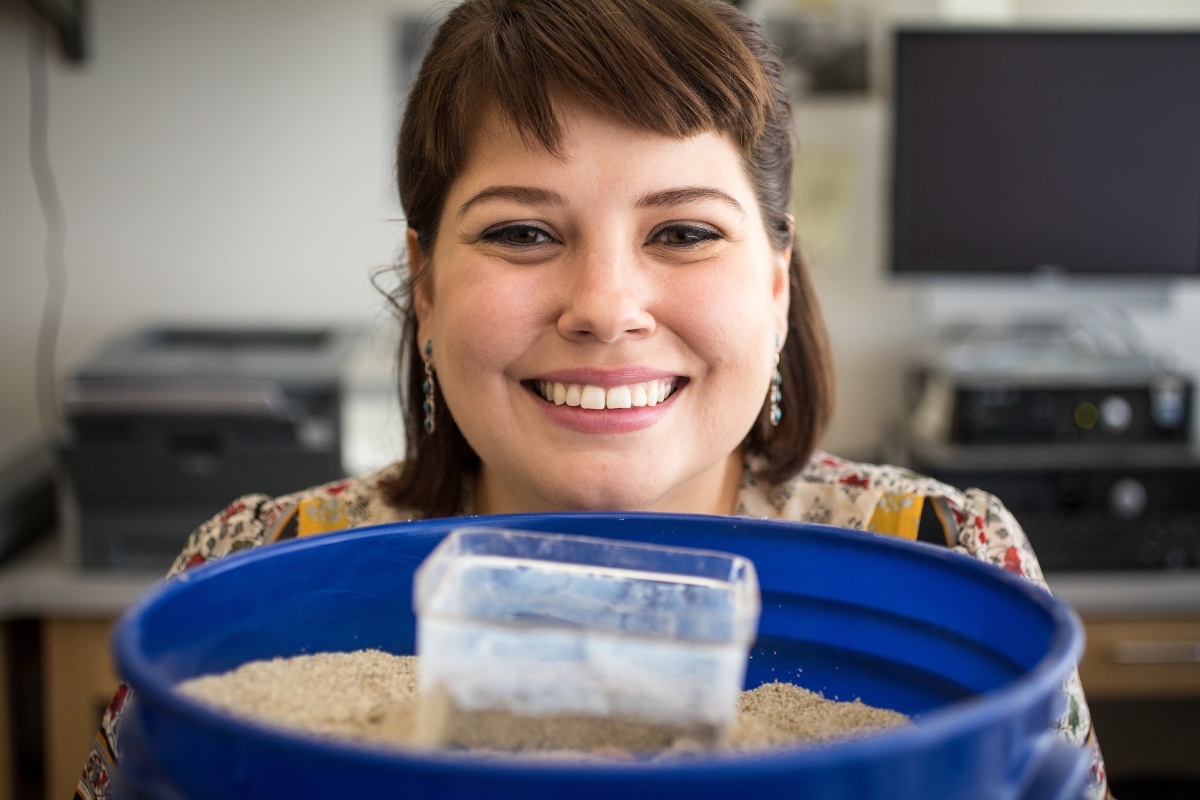Some civilizations build Gothic cathedrals, and some build huts.
It’s the same with ants, at least from an evolutionary context, but having a diverse group of builders might lead to superior structures.
Researchers at Arizona State University discovered that ant colonies with a mix of large and small workers build better nests than colonies with only small or large workers. Mixed-size groups built longer nests, excavated more sand and produced more architecturally complex nests than single-size worker groups.
Building a new home quickly has a lot of advantages, said Christina Kwapich, lead author of a new study on the subject.
“What we showed is that when you develop that polymorphism early, you can get under the ground faster,” said Kwapich, a postdoctoral research associate in the School of Life SciencesThe School of Life Sciences is part of the College of Liberal Arts and Sciences..
Video by Ken Fagan/ASU Now
Any colony that can get under the ground faster has an advantage in a hot arid environment like the desert, especially when a colony is new. All ant colonies start with one or two queens. When their first workers emerge, they usually move. After about a year, a colony with a worker group of different-sized ants will move the little empire a few yards away. It’s a vulnerable time.
“When you have a mixed group of worker sizes, the nest develops more rapidly,” Kwapich said. “The rate at which the nest is built is much higher when you have multiple sizes working on it. That’s important for a desert-living species, particularly this one which is prone to desiccation. They build multiple new nests sometimes in a year — they might move their whole colony — or they might build a nest and attach it on to their existing nest structure.”
Very few ant species have different body sizes, Kwapich said.
“People think there must be some kind of a function, so people have tested different ideas,” she said. “They looked at whether large workers collected large seeds and small workers collect small seeds but there’s no real evidence there’s a division of labor during foraging. We see that both sides dig the nest, so there’s no real division of labor in terms of who’s doing what.”
One of the goals of the study was to see if the workers’ sizes influenced anything at the colony level.
“It’s clear that when colonies have these different size distributions, then this very important colony-level trait — nest architecture — is being affected,” she said.
A more elaborate nest does a lot for the colony. Think about a family of four crammed in a one-bedroom apartment and the same family in a five-bedroom house with a yard and a pool.
Nests in general have been shown to have all kinds of physiological properties: They’re an extension of the colony itself. They are fortresses, defending the colony, and factories, where labor is organized with young workers at the bottom and old workers at the top. Different chambers have different functions, such as storage or processing. Leaf cutter nests have ventilation shafts.
“In the case of subterranean ants, we know very little about what the real function of different features of the architecture is, so how variation in architecture might influence the way that the colony processes seeds or defends itself, we don’t know,” Kwapich said.
The study was published in Philosophical Transactions of the Royal Society B last month. Co-authors were Gabriele Valentini and Bert Holldobler.
Top photo: Postdoctoral research associate Christina Kwapich replicates her study, "The non-additive effects of body size on nest architecture in a polymorphic ant," on July 25, 2018. Groups of 60 ants had 48 hours to build their nest colonies in 5-gallon buckets filled with sand. Photo by Charlie Leight/ASU Now
More Science and technology

ASU and Deca Technologies selected to lead $100M SHIELD USA project to strengthen U.S. semiconductor packaging capabilities
The National Institute of Standards and Technology — part of the U.S. Department of Commerce — announced today that it plans to award as much as $100 million to Arizona State University and Deca…

From food crops to cancer clinics: Lessons in extermination resistance
Just as crop-devouring insects evolve to resist pesticides, cancer cells can increase their lethality by developing resistance to treatment. In fact, most deaths from cancer are caused by the…

ASU professor wins NIH Director’s New Innovator Award for research linking gene function to brain structure
Life experiences alter us in many ways, including how we act and our mental and physical health. What we go through can even change how our genes work, how the instructions coded into our DNA are…



